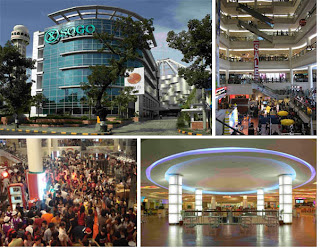 When I first invested in Yongnam, it was beginning to reward shareholders by paying dividends and being the biggest outside of Japan in what they do, I decided that they probably had a competitive advantage over smaller players.
When I first invested in Yongnam, it was beginning to reward shareholders by paying dividends and being the biggest outside of Japan in what they do, I decided that they probably had a competitive advantage over smaller players.
Consistent with Yongnam's new direction to invest in infrastructural projects that would generate recurring income, together with two partners, it submitted a tender for the construction and operation of an international airport in Myanmar. I rather liked this new direction.
However, when Yongnam's share price was driven up on speculation that their consortium would clinch the project in Myanmar, I divested most of my investment in the company. Price had gone up not because of some fundamental improvements. It went up based on speculative pressure. As it turned out, Yongnam et. al. was unsuccessful in clinching the project that time.
Subsequently, Yongnam suffered setbacks in its business and its stock price tumbled. I added to my reduced long position when my initial purchase price was hit. Basically, by then, my long position in Yongnam was funded by capital gains from trading its stock as well as the dividends paid by the company.
I was willing to stay invested because I felt that the setbacks were project based and should be temporary. The weaker results were not due to some destructive force which was more enduring in nature. Given time, things should improve again, I thought.
Well, instead of the improvement in results I was expecting, a bigger loss was announced months later. In a blog post in August last year, I said I would not be adding to my investment as Yongnam's attractiveness as an investment for income and growth was undermined. The stock was trading at 22c a share back then and it didn't look like it would be able to pay a dividend. As expected, no dividend was announced in its full year results.
At that time, I said that I would like to see Yongnam's order book improving and if it did not, I might have to trim my exposure. Businesses like Yongnam's need to constantly replenish their order books. As long as Yongnam has new orders, it will have earnings visibility if nothing goes wrong.
In its latest results, Yongnam announced that, as of end December 2014, its order book stood at $405 million. This is an improvement over end December 2013 which saw order book at $340 million. The improvement is a relief for shareholders.
Although Yongnam with its two partners secured the mega project in Myanmar, this still remains a wild card for now. We might remember how Yongnam's stock price rallied briefly when the announcement was made a few months ago. The rally sputtered and the stock price resumed its slide downwards.
This is probably because it remains to be seen what are the details and terms of the public-private partnership agreement with a 30 year concession for the international airport project in Myanmar. In Yongnam's recent full year statement, it is stated that discussion is still underway.
Naturally, the project will require funding and will take time to complete. The Myanmar government will get a US$700 million low interest rate loan from the Japanese government while the consortium will secure about US$520 million in loans from private lenders as well as use internal resources in the construction of the airport. The airport will take about 4 years to complete construction. This project is likely to make material contributions to Yongnam's performance once it gets off the ground.
So, taking everything into consideration plus the fact that I am already holding on to a much reduced long position in Yongnam compared to the time when I was invested in it for income and growth, I decided to increase my long position in Yongnam today after its stock took a beating and price tested an important support level I identified.
Buying in at 16.1c per share represents a 32% discount to Yongnam's NAV and it also marks my first purchase of its stock in quite a while.
Yongnam had a terrible 2014 but could 2015 and beyond be better?
See financial statement: here.
Related posts:
1. Yongnam: Investing in infrastructural development.
2. Portfolio review: Unexpectedly eventful.
3. Managing exposure in AK's investment portfolio.













































